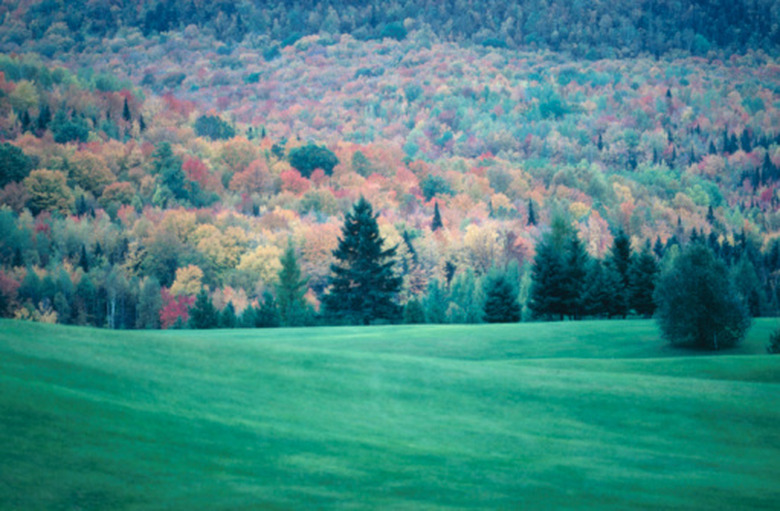What Are The Natural Resources Of The Deciduous Forest?
A deciduous forest is one in which the trees shed their leaves annually, as opposed to the coniferous variety, in which trees such as pines retain their needles or foliage all year round. Deciduous forests are found all over the world, though they are located principally in the Northern Hemisphere.
Trees
Trees
The most obvious resource of a deciduous forest is its trees. A huge variety of trees can comprise such forests and are harvested for their wood. The lumber taken from the deciduous forests has a wide range of uses, from construction to boats and furniture. In the temperate deciduous forests of the Northern Hemisphere, trees commonly found include:
- oak
- beech
- maple
- chestnut hickory
- elm
- basswood
- sycamore
- linden
- walnut
- birch
Flora
Flora
Many plants thrive in the deciduous forests, both temperate and tropical or subtropical. Among those that have uses for humans is the guelder rose, which is native to Europe but is now also found in the United States and Canada. Its bark is sometimes used in herbal medicine to treat conditions such as asthma, while its red berries can be used as a substitute for cranberries. Ferns are also common, and were once used by native Americans as an analgesic.
Fauna
Fauna
The deciduous forests are home to many animals and birds, including eagles, bears, chipmunks, squirrels, deer and weasels. Deer are often hunted for their meat, with venison becoming increasingly popular in many areas. The forests provide an ideal habitat, offering both shelter and a rich and plentiful source of food; predators can hunt smaller animals, while the herbivores feed on the abundant flora found on the forest floor.
Ecosystems
Ecosystems
The trees and plants of the forests also play a vital role in maintaining the world's ecosystems, as they absorb carbon dioxide and release oxygen back into the atmosphere. The decline of the forests as they are sacrificed to human endeavor causes damage to habitat for both flora and fauna, and can contribute to a rise in the greenhouse gases that worsen global warming. Recycling paper products can help to slow the loss of forest trees.
Cite This Article
MLA
Laing, Martin. "What Are The Natural Resources Of The Deciduous Forest?" sciencing.com, https://www.sciencing.com/natural-resources-deciduous-forest-8443815/. 22 November 2019.
APA
Laing, Martin. (2019, November 22). What Are The Natural Resources Of The Deciduous Forest?. sciencing.com. Retrieved from https://www.sciencing.com/natural-resources-deciduous-forest-8443815/
Chicago
Laing, Martin. What Are The Natural Resources Of The Deciduous Forest? last modified March 24, 2022. https://www.sciencing.com/natural-resources-deciduous-forest-8443815/
